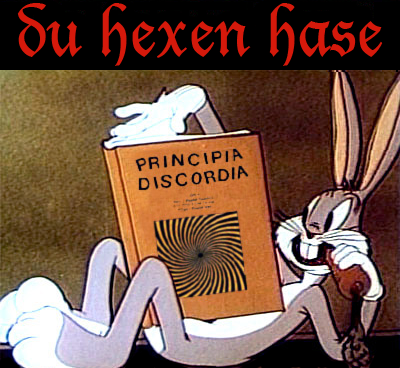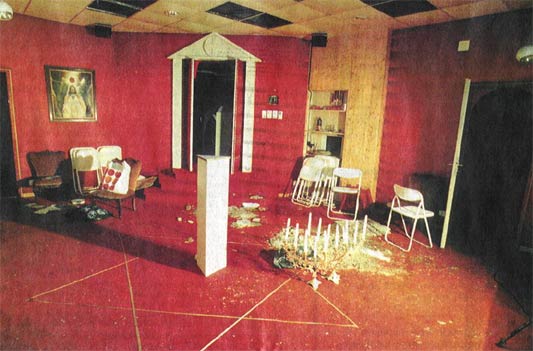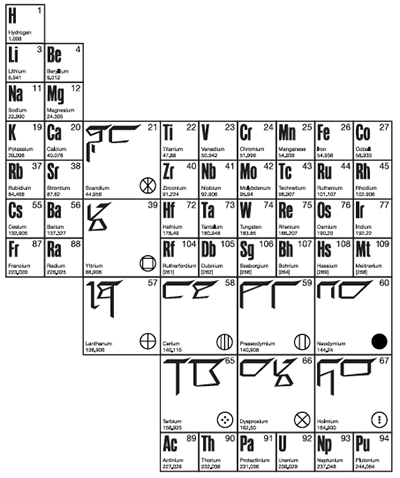
The Mormon Church and Genealogical Data
Twenty-two miles southeast of Salt Lake City, buried deep in the ragged rock of Utah’s Wasatch Range, lies a catacomb of names. Behind 700 feet of granite and six monstrous Mosler doors, the Mormon Church has squirreled away the world’s largest collection of genealogical material: more than 2 million microfilm reels of parish records, marriage indexes, necrologies, census reports, pilgrim registers, and piles of other documents – some dating back to the Middle Ages. The Granite Mountain Record Vault holds around 2 billion names, a sizable portion of the total number of people who have ambled through recorded history.
The vault is off limits to everyone but church employees and techies, but copies of its holdings are available to all comers, no charge, at Salt Lake City’s Family History Library, a massive repository that sits opposite the manicured lawns and ethereal spires of Temple Square. The Church of Jesus Christ of Latter-Day Saints has also seeded the planet with more than 3,000 Family History centers, mini-archives that stretch from Utah to Europe to Tonga – franchises of the dead. Amateur and professional genealogists, regardless of faith, are free to burrow into the church’s materials, including the Ancestral File, a computerized database that compiles and cross-references family trees submitted by hundreds of thousands of people, and the International Genealogical Index (IGI), which includes a whopping 300 million names.
Until recently none of this data was available online, to the consternation of many genealogists. Though the church has been a technology leader in the past, it seemed to quaver before the Internet. But in April, after months of rumor and speculation, it took the plunge, launching a beta test for a Web site called FamilySearch Internet Genealogy Service.
Along with a genealogy search engine, FamilySearch (www.familysearch.org) will provide full access to the catalog of the Family History Library, the Ancestral File, and most of the IGI. (The rest is coming soon.) A new Pedigree Resource File database accepts family trees from anyone; send yours in and the Mormons will burn it onto a CD and save it forever inside the vault – which is like having your Krugerrands stored at Fort Knox.
The Mormon Church is a conservative institution whose fascination with genealogy stems from complicated religious beliefs about the importance of identifying and “saving” the departed. As a result, it has amassed an unparalleled wealth of genealogical data, so the unveiling of the FamilySearch beta is being treated as a major event by genealogy buffs.
“It’s like having Mecca brought to your home,” says Cyndi Howells, author of Netting Your Ancestors and creator of Cyndi’s List, a genealogy links page.
But the Mormons aren’t putting everything online – for now, users can’t obtain copies of original documents, crucial for serious genealogical research – so some observers want to see more before doing any backflips.
“They’re starting with what’s easy, with low-hanging fruit,” says Beau Sharbrough, president of Gentech, an association for genealogical technology specialists. “You’ll still have to go to the Family History center to look at books or microfilm.”
Genealogists assume that the church, which is notoriously secretive, is gearing up for something bigger: the far more challenging task of putting primary records online. The Mormons appear to be working on that very problem. Even now, what they’ve made available is pretty amazing.
“As is, the site helps you cut out a lot of the time and energy you’d spend driving around doing research,” says Howells. “And it lets you do it from your home – late at night, in your bathrobe and bunny slippers.”
This Web splashdown comes at a time when general interest in genealogy is booming. The Mormons, as they’ve basically always done, are providing their data free, the costs underwritten by the coffers and volunteer brigades of one of the world’s fastest-growing and most prosperous religions. Online genealogy is a vast trove of give-it-away operations mixed with increasingly visible for-profit enterprises. The Mormons’ Web presence is having an inevitable impact on this delicate mix.
“The church is weighing in as the 800-pound gorilla in most family-history activities,” says Sharbrough. “For them to say, ‘We have a service and we’re going to put it on the Net for free’ creates a downward pressure on the price of information being distributed electronically to users.”
Tellingly, FamilySearch was an instant success. Less than 48 hours after the beta site went live, on April Fools’ Day, hits started numbering in the millions. The church had prepared for the onslaught, but the load balancing wasn’t up to snuff, and one server was overwhelmed while several others stood idle. But church technicians are confident that they’ll soon be able to handle as much traffic as the leading portals.
“Supposedly we’ll be able to handle it even if we become the number-one server on the Net,” says Alan Mann, a member of the FamilySearch team in Salt Lake City.
***
Once stereotyped as the hobby of maiden aunts, genealogy has quietly become a national compulsion. Nearly half the Americans interviewed for a Maritz Marketing Research study a few years back expressed interest in their roots, and some 7 percent were hardcore researchers – the types who buy CD-ROMs like The Confederate Dead Database or vacation in obscure New England towns to squint at ancient gravestones. Genealogy has become one of the most popular online activities, as hordes of hunter-gatherers track ancestors through the Net’s extensive and tangled offerings.
Computers have been vital in making roots more popular. PCs have helped organize and speed up much of the laborious paperwork, CD-ROMs have given researchers access to huge holdings, and the Internet has vastly expanded the reach of individual sleuths.
“Before computers, genealogists quickly found themselves surrounded by file cabinets,” says Brian Leverich, a computer scientist who heads up the popular site RootsWeb. “Computers meant that my grandmother could suddenly deal with tens of thousands of records.”
The vast majority of the Net’s data remains free. Family historians are known for their collaboration, and buffs routinely form societies, share findings and family lore, and help one another through the byzantine byways of historical research. This spirit of sharing is not simply good will but a calculated recognition that genealogy is a massively parallel process, that your next breakthrough might well lie on somebody else’s hard drive.
“The real importance of online genealogy is the connections people make,” says Steve Kyner, editor of The Computer Genealogist magazine. “In a way it’s the second birth of the original spirit of the Net, where people swap information and believe that most everything should be free.”
A prime example of this spirit is USGenWeb, a grassroots and very loosely organized effort to digitize genealogical data for every county in the US. Some USGenWeb volunteers are so enthusiastic that they have “liberated” a number of private databases into cyberspace.
Still, there’s money to be made, and people are jumping in. At this point, hundreds of companies are devoted to online genealogy, offering subscribers tools, advice, links, news, and, most important, scads of data. These companies include relatively low-key outfits like Kindred Konnections, based in Orem, Utah, which has carved out a loyal subscriber base by serving up the 30 million member-submitted names in its Ancestral Archive. Perhaps the biggest fish is Brøderbund, a Novato, California-based software giant whose Family Tree Maker site capitalizes on the large user base that the company has established through its profitable line of World Family Tree CD-ROMs. Another notable player is Ancestry.com Inc., also based in Orem, which offers an ever expanding rack of solid, searchable databases, including marriage records for 25 states and an index to 35 million US Census records. Ancestry has 70,000 subscribers; its profile was raised last February by a $12.3 million capital infusion.
These commercial players are changing the ecology of Internet family history, generating a now familiar tug-of-war involving producers, consumers, and advocates for free and open information. “We’re at a kind of a crossroads in online genealogy,” says Gentech’s Sharbrough. “There’s a scramble going on to make certain offerings exclusive, even if they are, say, indexed lists of public records like census or state birth records.”
“The open-source ethic is not as widespread as I would have hoped,” says RootsWeb’s Leverich, a longtime Linux addict. But even he acknowledges that the new wave of genealogy vendors has cranked open the spigots of online data and made many scarce resources widely available.
At the same time, there’s simply too much valuable stuff out there for any single company or organization to manage it all. With the Mormons throwing free data around, and with massive volunteer projects like USGenWeb continuing to grow, genealogy will probably retain its free spirit as commercial firms serve up juicy databases.
Who will win in the end? Everybody could. In a sense, genealogy in the information age amounts to a gargantuan, grassroots public-works project: the digitization of the network of man. In an effort as big as this, so noble and chaotic and compulsive, there may be enough room for old-school Internet values and the new Web economy.
If that happens, the Mormons deserve a lot of the credit. Though they certainly don’t think of themselves as Internet liberationists, their devotion to free and open genealogical information sets the tone for family history, online and off.
***
The Church of Jesus Christ of Latter-Day Saints is headquartered in a modern, 28-story office tower that sits across from Temple Square. Inside the tower’s endless hallways, men in dark suits stride around clutching chunky briefcases, while secretaries in floral-print dresses work the phones near Norman Rockwell-style gospel prints. Once a persecuted and polygamous sect, the LDS Church is now a multinational evangelical corporation with a net worth in the billions, forever replenished by the extraordinary industry of believers. A favorite church symbol is the beehive.
It all started in 1827 when an unschooled farm boy named Joseph Smith claimed he’d unearthed a set of inscribed metal plates from a Native American burial mound in upstate New York. These plates contained the Book of Mormon, which tells of a band of Hebrews who deserted a corrupt Jerusalem and made their way to the American continent more than 2,000 years before Columbus. When this clan of Israelites arrived in the New World, God commanded them to fashion and engrave metal plates to preserve religious documents and ancestral genealogies.
The obsession with genealogy really took off in 1836. That year, when Joseph Smith’s controversial teachings were already arousing the hatred that would eventually get him killed by an Illinois mob, Smith announced that the Hebrew prophet Elijah had appeared to him, granting the Mormon priesthood the ability to “seal” families together for eternity, a power that eventually carried over to dead ancestors and then to the mass of expired humanity. Mormons began to anticipate a heavenly reward that would fill many modern Americans with terror: an endless family reunion. Central to this process is the Mormon religious practice known as the salvation of the dead.
Nothing ghoulish is required. The Mormons baptize and seal the dead by proxy. Inside the temple, a living member of the church gets dunked in a baptismal font and listens to a recitation of Mormonism’s teachings on behalf of the deceased, whose spirit thus gets a chance for salvation. The operative term here is “ordinances in the temple.”
Not everyone approves – a few years ago, Jewish groups forced the church to stop performing temple ordinations on unrelated Holocaust dead. But for Mormons, genealogical research is a sacred activity. The goal, after all, is to save everybody before the end of time, cobbling together one huge planetary family that stretches all the way back to Adam and Eve.
***
In the 1840s Brigham Young – the Mormon pioneer who led the way to Utah after Smith’s murder in 1844 – wrote about “the perfect mania” that possessed some of his followers as they started “to get up printed records of their ancestors.” The mania continues still.
“I don’t want to say that keeping records is a tenet of the church,” says David Rencher, the main liaison to the genealogical community for the church’s Family History Department. “But there is very much the idea that what’s recorded here on earth will be recorded in heaven.”
A blond, fortyish man with laugh lines crinkling his eyes, Rencher works on the fifth floor of the church’s office tower. We’re sitting in his warren, which is dominated by a map of the world divided into the 28 geographic areas defined by the Mormon faith. Gesturing toward his computer, Rencher talks about the sacred potential of technology.
“We believe many of these tools have been divinely inspired and revealed because there is a need for things to occur in the culmination of God’s plan for this earth, especially the linking of the families of mankind,” he says. “I don’t think He just gives us these things so we can play solitaire on them.”
In this spirit, the church has long been engaged in an intensely religious deployment of infotech. Mormon missionaries bearing microfilm cameras began trawling the world for records in 1938. Thirty years later church technicians started plugging names into IBM mainframes. Coders for the Family History Department wrote Personal Ancestral File (PAF), an early family-tree program that is still one of the most popular for PCs, and they whipped up Gedcom, a standard genealogical file format. Over the last few decades, the church has built relational databases, researched new storage and image-conversion technologies, extracted and published huge electronic files, and committed much of its data to low-priced CDs. (A typical release is the 1851 British Census, which goes for $5.) It all requires deep pockets, and the church digs into them for one reason only: the salvation of the dead.
Mormon families are urged to extend their own genealogical inquiry at least four generations back; many of them use PAF to organize their research, the same way families use Quicken to organize their finances. After confirming the names of their forebears, each family inputs the list into TempleReady, a program that weeds out names that have already received the temple ordinances. TempleReady then spits out a disc that is suitable for submission to the temple, whose computers in turn submit the information to the Family History Department for final tabulation.
TempleReady addresses one of the biggest bugaboos of the temple ordinance system: redundancy. The church has been battling duplicate ordinations since the 1920s, when a retired accountant named Harry Russell created a central repository of index cards to record completed ordinances. Still, of the more than 300 million ordinances Mormons have done since the practice began in 1842, many have been duplications, brought on by research error, multiple records, variant spellings, and the tug of celebrity. Over the years, Joan of Arc has received 14 proxy baptisms, while Lucille Ball, Boris Karloff, and Walt Disney have racked up 4 each.
In 1969, the church’s Genealogical Society (the forerunner of today’s Family History Department) unveiled Giant, a mainframe system that automated the submission and clearing of names. These records eventually grew into the source of the Mormons’ supreme ancestral database: the International Genealogical Index. Though the IGI has recently been detached from the file that records temple ordinances, its 300 million names are largely those of individuals ordained after death.
Since 1969, the church has organized battalions of volunteers for the tedious task of manually inputting documents from the Granite Mountain Record Vault, especially vital records related to births, christenings, and marriages. Most of this information winds up in another holding file, separate from the IGI. Temples can reach into this fresh stack of names whenever church members – often kids – want to serve as proxies but have no names from their own family tree.
These projects are colossal enterprises. For the past 20 years, for example, the church has been extracting the 50 million names from the 1880 US Census, an effort that has involved more than 20,000 inputters.
Between the church’s own efforts and the mounting submissions from church members armed with PCs, the Mormons are swamped with information. Mormons perform between 10 and 11 million temple ordinances a year, but the 50-odd temples around the globe cannot keep up. Partly to widen the pipe, Gordon B. Hinckley, the living prophet atop the church hierarchy, has called on communities to build leaner, less expensive temples. The first of these recently opened in Monticello, Utah, after only nine months of construction.
With its FamilySearch Web site, the LDS Church is now distributing much of its information at the speed of light. But before FamilySearch could get off the ground, a number of church heavyweights voiced serious worries about the idea. Some feared that hackers would manhandle their electronic treasures, a problem the church solved by keeping the Web servers and the computers that store the original IGI and Ancestral File on different networks. Others within the LDS power structure wondered whether the church had any business being online in the first place.
Alan Mann, the Family History Department librarian responsible for electronic media, told me that the decision to go ahead with the site was ultimately unanimous – and made at the highest level. Sitting in his library office, I asked him whether this meant President Hinckley, the apostolic Quorum of Twelve, or the larger ecclesiastical body known simply as the Seventy. Mann let out a dry chuckle. “I’m not saying this facetiously, but it may be a little hard to swallow for those not of our faith,” he said. “The answer is that ultimately the decision was made by the Lord.”
***
The Wasatch Valley, home to Novell and WordPerfect, cradles one of the largest concentrations of software and engineering firms outside Silicon Valley. It’s also home to one of the most energetic private companies in online genealogy: Ancestry.com Inc.
Headquartered in Orem, at a small office park near a swath of tract homes, Ancestry is a publisher of genealogical reference books that leaped rather precociously onto the Internet in April 1997. The company started offering subscribers access to a small but growing number of genealogically solid databases: census information, vital records, obituaries, land deeds, probate records, library catalogs. The company secured exclusive Internet licenses from other genealogical publishers who knew Ancestry and respected it.
“We come from genealogical roots,” says Curt Allen, Ancestry’s CEO and a practicing Mormon. “We’re not just an Internet startup trying to make money selling databases.”
Interest in the site took off quickly. Hobbyists, including crowds of beginners, started pouring in, and by late 1998 Ancestry was attracting a million visitors a month. With 70,000 subscribers, some of whom pay a $100 annual fee for the “gold membership plan,” Ancestry could become one of the more successful Internet subscription services. Moreover, most Ancestry customers stick around for a while rather than just downloading the data they need and letting the subscription lapse. It’s a phenomenon that puzzles some outsiders, but which Allen insists makes perfect sense.
“People get this in their blood. They’re never done. There’s always more connections you can make and more detail you can learn about your family. When you get the bug, you really get it.”
To keep subscribers happy, Ancestry continuously adds information to its servers, which currently pack some 43 gigabytes of records. Ancestry either licenses its databases or buys them outright, and the company has stuck to its motto of adding “a database a day” since launching. According to Jake Gehring, Ancestry’s sneaker-shod, 28-year-old acquisitions manager, there’s no end in sight.
“There’s so much data out there I could be acquiring it for decades,” says Gehring, who majored in family history at Brigham Young University. One recent coup was the American Genealogical Biographical Index, which a tiny library in rural Connecticut has been cranking out at a funereal pace for half a century. The Index contains an estimated 12 million entries in 210 pricey volumes that formed a ceiling-high stack in Gehring’s office.
“A project like that screams for digitization,” Gehring notes.
But converting these records into bits gouges the pocketbook. Unlike the Mormon Church, Ancestry cannot draw from a huge pool of devoted volunteers, and to keep the flow going the company depends on high-speed scanners, on-site editors, and lots of nimble inputters in China.
Ancestry is also tapping the energies of the genealogical community with its free World Tree database. Like the LDS Church’s Pedigree Resource File, World Tree is a lineage-linked system that accepts family trees from whoever wants to upload them. The company gets around 30 submissions a day. “This is a living document,” says senior Ancestry programmer Richard Stauffer, another BYU grad. “I can come back every week, and it’s grown. The potential is unlimited because people are helping themselves. We’re just the instrument to allow that to happen.”
Like most family historians, Cyndi Howells – owner of Cyndi’s List – is suspicious of these free-floating digital pedigrees, which are only as reliable as the hobbyists who post them. “A lot of these lineage-linked databases are basically word of mouth,” says Howells. “Most of the time they are accurate, but how do you know unless you actually prove it yourself? So someone sat down with Aunt Gertie and got everything out of her brain. For all we know, Aunt Gertie’s a wacko.”
Howells admits that databases like World Tree are a great place to find distant cousins, which is not as trivial a feat as it may sound. In fact, one of the quietest social transformations catalyzed by the Internet is the virtual reconnection of extended families, a trend that Ancestry has pounced on. A day after Christmas 1998, the company launched MyFamily.com, a site that provides a secure, password-protected space where far-flung families can hold virtual reunions, post baby photos, swap family lore, register birthday gifts, and chat. Curt Allen believes that Internet technology can mend some of the family ties that technology has otherwise torn apart in our highly mobile society. Eighty days after MyFamily.com’s launch, 500,000 people had signed up.
The profit potential is clear to investors. Last February, Ancestry’s success with MyFamily.com helped the company net $12.3 million in first-round funding from CMGI, Intel, and the Wasatch Venture Fund. Intel warmed to the fact that MyFamily.com’s need for secure passwords fell right in step with the Pentium III’s controversial processor ID feature. CMGI CEO David Wetherell, who ponied up most of the funding, embraced Ancestry as an example of the “viral” marketing he loves. Viral marketing exploits Web sites or technologies, like Hotmail or GeoCities, whose users multiply exponentially: Early adopters invite their friends, who in turn invite their friends, initiating a positive-feedback loop that churns out dollars. (See “Pass It On,” page 60.) MyFamily.com is a particularly good carrier – the virus spreads through flesh and blood.
“What we’ve got is beyond viral,” Allen says. “We’re referring to it as genetic marketing.”
***
The genealogical possibilities of the Internet seem limitless. According to Evan Ivie, a retired BYU professor of computer science and something of an elder in the Wasatch Valley genealogical community, the Net may eventually host a giant family tree linking all family trees. Ivie foresees a heterogeneous, grassroots Web network of linked ancestral homepages, each maintained by individual researchers responsible to no central authority.
“I see this great structure of homepages occurring,” he says, “with descendants being responsible for making sure that the information they’ve got on their great-great-grandfather is accurate. I see this all tying together in a world family tree.”
Ivie is a diminutive, bright-eyed man in his late sixties. Born of pioneer Mormon stock, he fell in love with both genealogy and science as a kid. When he first read about electronic “superbrains” in the 1950s, he knew that these machines held the future of family history. After running Pentagon war games on an IBM 650 and picking up a doctorate in electrical engineering from MIT, Ivie worked for 13 years at Bell Labs, where he developed the Programmer’s Workbench for Unix.
Like most genealogists, Ivie is sold on the power of the Internet but troubled by the quality of its data. “Somehow we’ve got to have all the raw information there, and we’ve got to tie those family trees much more directly into that raw information. Then it will become a system that is self-correcting,” he says. “Right now it’s a mass of error. It’s chaos. It’s spinning out of control.”
To rein in the chaos, Ivie believes online pedigree charts need to be permanently marked with source data. In online genealogy’s next evolution, the scanned images of actual records will be available, along with the indexes and intelligent agents to search and organize those records.
The Mormons are on the case. William Barrett, who heads up the Family History Technology lab at BYU, is working on hand-printed-character recognition, digital document management, and homegrown algorithms capable of organizing the information on a wide variety of image files.
“Right now there are 2 million rolls of microfilm that are still microfilm,” says Barrett. “Doors will open if some of that data starts getting out there digitally.”
Ivie can hardly wait, and like many of his Mormon friends, he seems as excited by the spiritual possibilities as the hardware. He lectures on technological issues at genealogical conferences around the country, but he’s also the bishop of a Mormon congregation, and his prognosis for genealogy is part of a techno-millennialist vision of the future of humanity. Mormons believe that it is human destiny to perfect ourselves, to create worlds, and to seed our genetic lines throughout the galaxy. They’re like Christian Extropians.
“Church members believe that there is an intergalactic family headed by God that exists on multiple worlds,” Ivie explains. “This family exists throughout the universe, throughout all of space.”
Ivie insists that we haven’t yet made contact with this larger family of humanity, and that even the church does not know how we will eventually communicate with them. “I am convinced there are forms other than the purely electromagnetic, forms where communication occurs through the spirit inside of us,” he says. “The Internet is still electromagnetic communication, but it’s almost instantaneous, and information can be made available anyplace where it’s desired. Maybe the medium is not exactly the one used by this intergalactic family for communication, but the Internet is scratching on my belief of how this communication would be available.”
Within this futuristic galactic plan, genealogical technology plays a pivotal role, Ivie says: “It becomes very important that this little branch of this huge family on this particular world is properly tied together, is properly recognized, and that we have records of how all that fits together.” The gathering and forging of our ancestral links into a planetary family is, for Mormons, an ultimately millenarian operation, one that sweeps up technology into its grand vision of the kingdom ahead. Joseph Smith himself proclaimed that the salvation of the dead was necessary to usher in the last days, “the dispensation of the fullness of times.” And one sure sign of the fullness of times, it seems, is the fullness of databases.
Originally appeared in Wired




